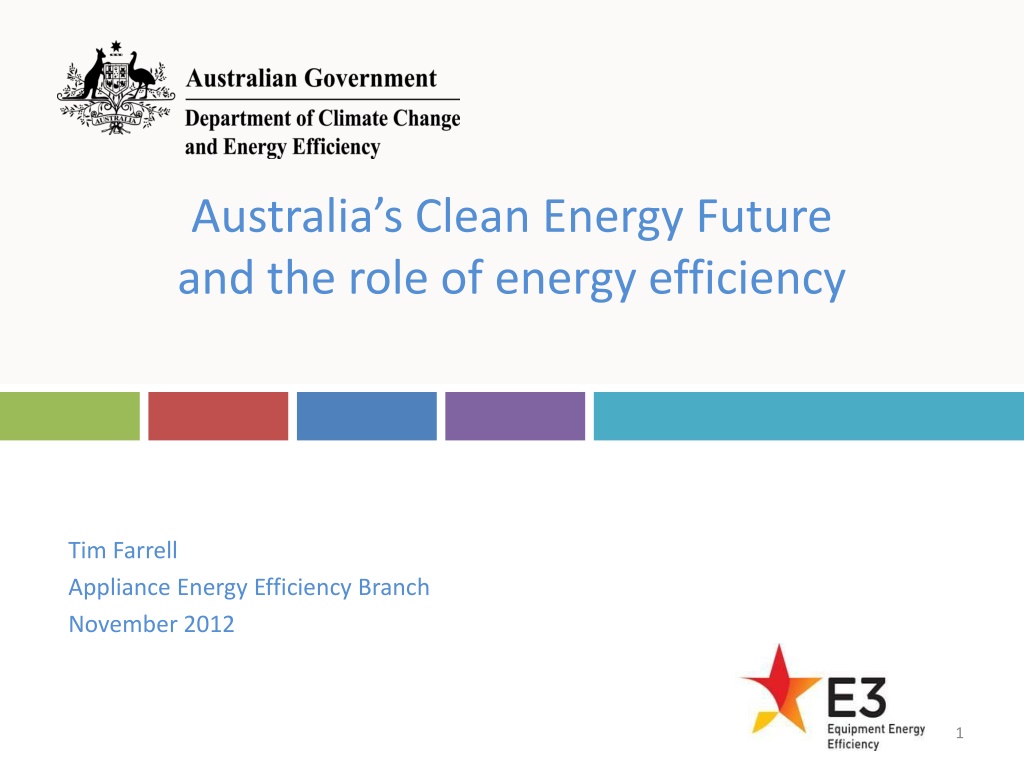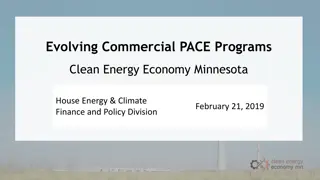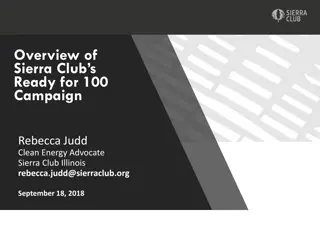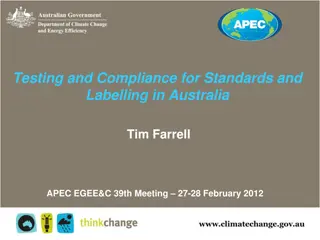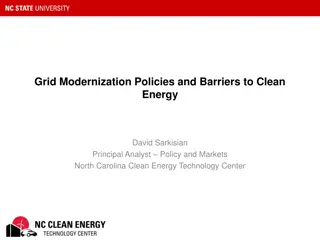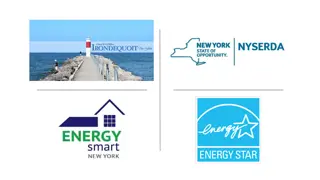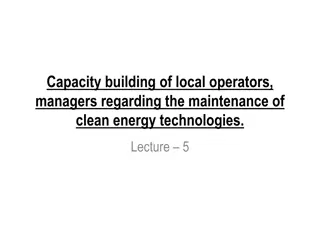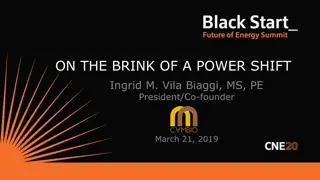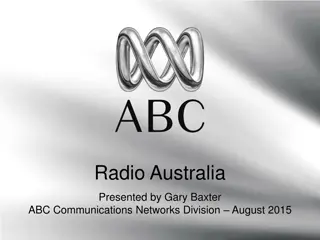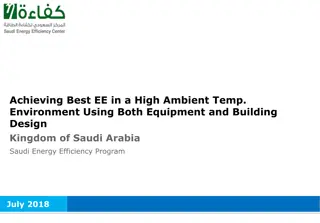Australia's Clean Energy Future: Role of Energy Efficiency Programs
The discussion revolves around Australia's clean energy future and the pivotal role of energy efficiency in driving sustainable practices. It covers topics such as the Carbon Pricing Mechanism, Encouraging Energy Efficiency initiatives, and the Equipment Energy Efficiency Program (E3). The success story of reducing energy consumption in new appliances highlights the positive impact of implementing energy efficiency standards over the years.
Download Presentation

Please find below an Image/Link to download the presentation.
The content on the website is provided AS IS for your information and personal use only. It may not be sold, licensed, or shared on other websites without obtaining consent from the author. Download presentation by click this link. If you encounter any issues during the download, it is possible that the publisher has removed the file from their server.
E N D
Presentation Transcript
Australias Clean Energy Future and the role of energy efficiency Tim Farrell Appliance Energy Efficiency Branch November 2012 1
CleanEnergyFuture Renewable Energy Energy Efficiency Carbon Price Land Sector
The Carbon Pricing Mechanism - staged process of introduction 2008-09 2011- 12 National Greenhouse and Energy Reporting System Reporting and regulatory frameworks Australian National Registry of Emissions Units 2012-13 2014- 15 The Government sets the price to support the transition to carbon pricing Fixed price period 2015-16 2017- 18 Flexible price period with price controls One way linking with the EU ETS 2018-19 onwards The market sets the price and the sources of abatement. Full linking with the EU ETS Fully operational emissions trading scheme 3
Equipment Energy Efficiency (E3) Program MEPS - 2004 Distribution Transformers Single Phase A/Cs Commercial Refrigeration Linear Fluorescent Lamps MEPS - 2005 Electric Storage Water Heaters Refrigerators & Freezers MEPS 2009 Incandescent GLS lamps Compact Fluorescent lamps External Power supplies Chillers (Commercial A/C) Televisions MEPS 2010 Incandescent GLS lamps Compact Fluorescent lamps Refrigerators & Freezers Air Conditioners MEPS 2011 Gas Water Heaters Labelling - 1986 Refrigerators & Freezers Clothes Washers Clothes Dryers Dishwashers Air Conditioners - non ducted single phase Labelling - 2009 Televisions Voluntary Labelling 2010 Swimming Pool Pumps MEPS - 1999 Electric Storage Water Heaters Refrigerators & Freezers MEPS - 2001 Three-Phase Electric Motors Three Phase Air Conditioners MEPS - 2003 Fluorescent Lamp Ballasts 5
A Success Story Reducing Energy Consumption of New Frost Free Refrigerators & Freezers, 1986 to 2006 Energy Consumption of New Frost Free Refrigerator-Freezers, 1980 to 2006 1400 Initial MEPS introduced in 1999 1200 Sales weighted energy of new units (kWh/year) MEPS 2005 full impact 1000 Labelling introduced in 1986 800 Label effect waning, impact of CFC phase-out 600 400 Labelling and MEPS together have resulted in a 67% reduction in energy consumption for new family sized frost free refrigerator- freezers over the period 1986 to 2005. 200 0 1980 1981 1982 1983 1984 1985 1986 1987 1988 1989 1990 1991 1997 1998 1999 2000 2001 2002 2003 2004 2005 2006 1 992 19 93 19 94 19 95 199 6 Year 6
New National Legislation New National Legislation Greenhouse and Energy Minimum Standards Act 2012 commenced on 1 October 2012 Broader coverage Replaces 4 state-based regulators with a single Australian GEMS Regulator Requirement for the provision of sales data Fines and other enforcement measures for non- compliance 8
Greenhouseand Energy Minimum Standards Act Victoria NSW Queensland One Northern Territory Western Australia Australian Regulator South Australia Tasmania ACT
Under the GEMS Act there are a range of penalties and enforcement measures These penalties and enforcement measures include: Suspension and cancellation of registrations Infringement notices Civil and criminal penalties (fines) Injunctions to put a stop to non-compliant activity Enforceable undertakings agreements to rectify an alleged wrong and compensate consumers and the environment 10
Penalties are per offence but the Regulator may develop rules where multiple offences apply One penalty unit currently equals $110.00 Category A Products: Infringement notice for an individual: $660 Infringement notice for a corporation: $3,300 Civil/criminal penalty for an individual: $6,600 Civil/criminal penalty for a corporation: $33,000 Category B Products: Infringement notice for an individual: $1,320 Infringement notice for a corporation: $6,600 Civil/criminal penalty for an individual: $13,200 Civil/criminal penalty for a corporation: $66,000 11
The Regulator can publicise contraventions The Regulator can report enforcement action including the name of any person who has been issued with or paid an infringement notice. This ensures transparency and ensures that purchasers can monitor the history of non- compliance. This may be relevant to future purchasing decisions. 12
For more information Clean Energy Future package www.cleanenergy future.gov.au Appliance and equipment energy efficiency www.energyrating.gov.au Energy efficient buildings www.climatechange.gov.au/what-you- need-to-know/buildings Energy efficiency in households www.livinggreener.gov.au Industrial energy efficiency www.energyefficiencyopportunities.gov.au
